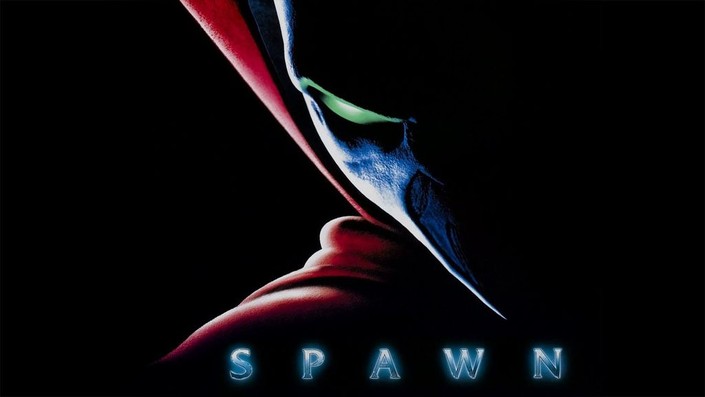Spawn (1997)

“Spawn,” released in 1997, is a dark fantasy superhero film directed by Mark A.Z. Dippé, based on the popular character created by Todd McFarlane for Image Comics. The film stars Michael Jai White in the titular role, supported by an impressive cast that includes John Leguizamo, Martin Sheen, Theresa Randle, and D.B. Sweeney. With its unique blend of horror, action, and complex themes, “Spawn” stands out as a distinctive entry in the superhero genre, exploring moral ambiguity, redemption, and the struggle between good and evil.
The narrative centers around Al Simmons (Michael Jai White), a highly skilled CIA operative who is betrayed and murdered by his boss, Jason Wynn (Martin Sheen). After his death, Simmons finds himself in a hellish afterlife, where he makes a pact with the devilish figure known as Malebolgia. In exchange for his soul, Simmons is resurrected as Spawn, a powerful, undead warrior tasked with leading an army for Malebolgia.
Upon returning to the world of the living, Simmons discovers that five years have passed since his death. He is horrified to find that his former life has been upended, and he has become a grotesque figure with supernatural powers, including the ability to manipulate hellfire, shapeshift, and regenerate. As he grapples with his new existence, he learns that he must confront both his inner demons and the forces of evil threatening the world.
Spawn’s journey is further complicated by the presence of the Violator (John Leguizamo), a grotesque demon who serves as Malebolgia’s enforcer and comic relief. The Violator takes delight in tormenting Spawn, adding a layer of dark humor to the narrative. The film also explores Simmons’ relationship with his former girlfriend, Wanda (Theresa Randle), who has moved on with her life, complicating his emotional struggle.
“Spawn” delves into several complex themes, most notably the concepts of betrayal, redemption, and the nature of good versus evil. At its core, the film explores the consequences of Simmons’ choices and the moral implications of his pact with Malebolgia. As Spawn, he grapples with his identity and the question of whether he can redeem himself after the sins of his past.
The theme of revenge is prominent throughout the film, driving Simmons’ motivations as he seeks vengeance against those who wronged him. However, the film complicates the traditional revenge narrative by highlighting the emotional toll it takes on him. This internal conflict raises questions about the nature of justice and whether vengeance truly brings peace.
Additionally, “Spawn” presents a nuanced view of morality. The film does not shy away from portraying the darker aspects of humanity, including betrayal and manipulation. Characters like Wynn and Malebolgia embody the corruption and greed that can exist in positions of power, creating a stark contrast with Simmons’ struggle for redemption.

One of the standout features of “Spawn” is its visual style, heavily influenced by the comic book aesthetic. The film combines practical effects with groundbreaking CGI, creating a distinctive and immersive world that reflects the dark themes of the story. The visual effects team, including notable contributions from Industrial Light & Magic, brought to life the character of Spawn, showcasing his supernatural abilities and grotesque appearance.
Director Mark A.Z. Dippé’s use of lighting and shadow enhances the film’s dark atmosphere, creating a sense of foreboding and tension. The cinematography captures the gritty urban landscape, which serves as a fitting backdrop for Spawn’s struggle against evil.

The character of Spawn is central to the film’s emotional depth. Al Simmons undergoes a significant transformation as he navigates his new reality. Michael Jai White’s portrayal of Simmons is compelling, capturing the character’s internal conflict and sense of loss. His journey from a skilled operative to a tormented anti-hero adds complexity to the narrative, allowing audiences to empathize with his plight.
John Leguizamo’s performance as the Violator injects dark humor into the film, providing a stark contrast to Spawn’s serious tone. The Violator’s antics and interactions with Spawn create moments of levity amidst the darkness, showcasing the film’s ability to balance horror and humor.
Wanda’s character, played by Theresa Randle, serves as a reminder of the life Simmons has lost. Her struggle to move on while still carrying the weight of their past relationship adds emotional resonance to the story. The supporting characters, including D.B. Sweeney as Twitch, contribute to the film’s exploration of themes related to friendship, loyalty, and the fight against evil.

Upon its release, “Spawn” received mixed reviews from critics, with some praising its ambitious visual style and engaging story, while others criticized its execution and pacing. However, the film has since gained a cult following, with many fans appreciating its unique take on the superhero genre and its exploration of darker themes.
“Spawn” paved the way for a resurgence of comic book adaptations in the late 1990s and early 2000s, influencing subsequent films with its blend of horror and action. It also inspired an animated series and a live-action television adaptation, further solidifying the character’s place in popular culture.

In conclusion, “Spawn” is a compelling dark fantasy superhero film that explores profound themes of betrayal, redemption, and the moral complexities of good and evil. With its striking visuals, strong performances, and unique narrative, the film offers a fresh perspective on the superhero genre. Though it faced mixed critical reception upon release, “Spawn” has established itself as a cult classic, resonating with audiences who appreciate its blend of horror, action, and emotional depth. Guillermo del Toro’s adaptation of the iconic comic book character remains a significant entry in the landscape of superhero cinema, reminding viewers that even in the darkest of times, the possibility of redemption exists.
Suggested videos for you:
Suggested videos for you:
Suggested videos for you:











